Epidermolysis Bullosa Research Hub
Queen Mary University of London
At Queen Mary University of London (QMUL), we have a critical mass of researchers with an interest and expertise in understanding Epidermolysis Bullosa (EB). Our research expertise spans from specialised in vitro and in vivo models, drug development and Squamous Cell Carcinoma (SCC) research. The EB research hub is a collaborative platform to accelerate translational research at QMUL and with our partners across the UK. We have strong links to the Nationally Commissioned paediatric EB Service at Great Ormond Street Hospital and the National EB Diagnostic Laboratory. This provides important patient insights as well as clinical samples through their biobank.
The EB Research Hub is building an EB research drug discovery pipeline spanning from AI-supported drug target identification, unique transcriptomic datasets, in vivo/ in vitro testing platforms, and gene editing to pre-clinical data generation in preparation for clinical trial developments.
About Epidermolysis Bullosa
EB is a family of rare, incurable, inherited disorders that are characterized by extreme skin and mucosal fragility. EB causes painful blisters on the skin, but it can also affect the mouth, oesophagus, lungs, muscles, eyes nails and teeth.
EB is grouped into four subtypes based on the genetic mutation and the depth of the blister. EB simplex (EBS), Junctional EB (JEB), Dystrophic EB (DEB) and Kindler Syndrome (KS). The effects of the disease can be quite mild, disabling or life-threatening depending on the type of EB. The two most severe subtypes of EB based on disease pathology are recessive dystrophic EB (RDEB) and JEB. While the most common form EBS is also the mildest form.
EB in the UK is treated at one of two specialised clinical centres. EB is currently not widely curable and disease management focuses on the treatment of the blisters and subsequent wounds and the prevention of secondary complications. Patients with severe forms of RDEB and JEB require hours of daily intensive care.
Despite disease similarities, there are striking differences in survival between patients with RDEB and JEB. RDEB patients survive to early or mid-adulthood whereas JEB patients rarely survive beyond the first 1-2 years of life in the most severe form of the disease. In RDEB a primary cause of death is the development of aggressive SCC at an early age.

Meet the EB Hub members
John Marshall
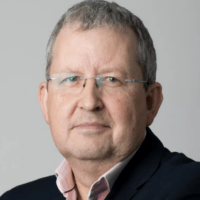
Professor John F Marshall is a Professor of Tumour Biology at Barts Cancer Institute. He has studied the role of molecules called integrins for 30 years. These molecules allow cells, including cancer cells, to interact with and move upon and through the proteins that surround them in tissues. One of these integrins, called avb6, does not appear on the skin cells (keratinocytes) in undamaged skin. However when the skin blisters (as occurs in EB) avb6 appears at high levels on these keratinocytes. Importantly, in SCCs, which are the skin cancers that develop with certain types of EB (including RDEB and JEB), the cancer cells (which are derived from normal keratinocytes) also have high levels of avb6 on their surfaces and this helps the cancer to grow and spread to other sites. Professor Marshall is developing gene therapies and anti-cancer therapies that are specifically targeted to avb6 in order to suppress blister formation and to eliminate SCC.
Matthew Caley
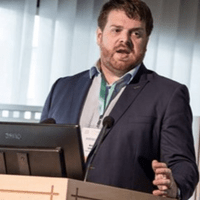
Dr Matthew Caley is a Senior Lecturer in Cell Biology at the Blizard Institute, with more than a decade of experience in skin research, matrix biology and generating in vitro skin models. He is currently running pre-clinical trials focused on a range of different skin diseases including junctional epidermolysis bullosa using an in vitro model system. He is active within the British and European skin research communities and has close collaborations with the skin-focused consumer goods industry. Dr Caley is a committee member of the British Society for Investigative Dermatology and a founder of the national Skin Microbiome in Healthy Ageing (SMiHA) research network. He carries out consultancy work for multiple small and large skin-focused biotech and consumer companies and sits on the science advisory board of a new biotech start-up focused on wound healing. His group use 2D, 3D and mouse models of skin to understand the molecular biology of skin ageing, rare genetic skin diseases and skin cancer. His special focus has been on laminin 332 and how this protein is far more than just a structural protein.
Edel O'Toole
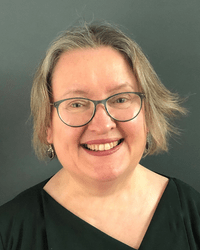
Professor Edel O'Toole is a clinical academic dermatologist at the Blizard Institute. In her clinical practice at Barts Health NHS Trust, she sees patients with rare diseases such as ichthyosis and palmoplantar keratoderma. She also practices general and specialised paediatric dermatology. Her research interests are skin barrier, basement membrane biology, modelling rare skin diseases and finding new pathomechanisms and drug targets. She also leads a clinical phenotyping and genetic study on atopic eczema in our local Bangladeshi population, who have more severe eczema and eczema herpeticum. She was Centre Lead of QMUL's Centre for Cell Biology and Cutaneous Research from 2015-2022. She was chair of BADGEM, a network of individuals interested in genetic skin disorders in the UK from 2017-2023. She is on the Medical and Scientific Advisory Board of Pachyonychia Project and am Chair of the Medical Advisory Board of the Ichthyosis Support Group. She is a recent board member of the European Society for Dermatological Research and chaired the Diversity Committee and chair of the Medical and Scientific Advisory Board of DEBRA UK.
Emanuel Rognoni
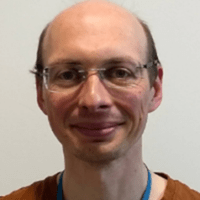
Dr Emanuel Rognoni is a Senior Lecturer in Skin Biology at the Blizard Institute, with >14 years of research experience with laboratory animals which is acknowledged in >22 co-authored publications. During his PhD he focused on the EB subtype Kindler Syndrome where he revealed a novel function of the integrin binding protein Kindlin-1 for epithelial stem cell homeostasis by promoting αvβ6 integrin-mediated transforming growth factor-β (TGF-β) activation and epithelial Wnt signalling. During his postdoc he further specialized in skin research, investigating how different dermal fibroblast subpopulations organize and influence each other during development and wound healing in Professor Fiona Watt’s lab (King's College London). Using genome-wide sequencing technologies, innovative 2D/3D culture platforms and skin transgenic/disease models, his group at QMUL is now uncovering the molecular mechanisms and implications of fibroblast heterogeneity in skin health, regeneration and disease, in particular EB subtypes.
Visit Dr Rognoni's profile page
Angus Cameron
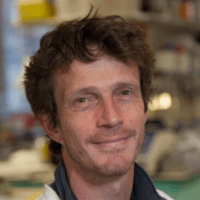
Dr Angus Cameron is a Reader in Cell Signalling and Tumour Biology at Barts Cancer Institute. His work focuses on the interaction between tumour cells and the microenvironment with a specific focus on cancer-associated fibroblasts. Using a combination of animal models and cell biology Dr Cameron’s lab has uncovered novel regulators of mechanotransduction, critical to fibroblast and cancer cell biology. These pathways play important roles in EB-associated fibroblasts and also in SCCs, which commonly develop in EB patients. In collaboration with Dundee Drug Discovery, the Cameron laboratory has developed novel drugs for targeting mechanotransduction, which are potential therapeutics for EB and cutaneous squamous cell cancer. Current work focuses on SCC cancer models in 2D and 3D co-cultures with fibroblasts to allow the testing of novel compounds as potential therapeutics.
Ines Sequeira
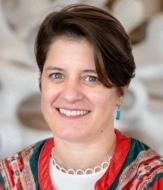
Dr Ines Sequeira is a Senior Lecturer/Associate Professor in Oral Cancer and Deputy Director of Research at the Institute of Dentistry at Queen Mary University London. As a Stem Cell biologist for >18 years, she has dedicated much of her research career to studying skin and oral epithelia homeostasis, wound healing and cancer. She is currently involved in the global effort of mapping all the cells of the human body through the Human Cell Atlas (HCA) initiative and coordinates the Human Cell Atlas for the Oral and Craniofacial tissues focused on understanding the oral mucosa cell heterogeneity.
Dr Sequeira team’s research focus on understanding how wounds in the mouth (oral mucosa) heal rapidly and without scarring when compared to skin; and when this scarless behaviour is de-regulated, like in RDEB skin and oral mucosa. RDEB patients are prone to the development of skin tumours; however, oral tumours rarely develop in RDEB patients, suggesting an inherent resistance to cancer formation of the oral mucosa that could be related to the different cell types, cell states, and inflammatory state present in the mouth versus the skin.
They use state-of-the-art technologies that enable them to identify the different cells that make up a tissue (i.e. cellular composition), and give insight into what those cells are doing (i.e. cell state). These modern methods allow them to maximise information gain from an individual tissue sample, and therefore be respectful of a patient’s disease burden.
By studying the stark differences in cellular composition and cell state of the mouth and skin, the team will be able to identify cellular and molecular factors that contribute to scarless healing and cancer resistance, which is a prerequisite for the design of effective therapies to improve wound healing, prevent scarring and cancer formation in both skin and the mouth in RDEB patients. Details about this project funded by DEBRA can be found here.
These data will potentially highlight cell programs that can be targeted for therapy and will be widely available to support further research by the EB community.
Shafaq Sikandar

Professor Shafaq Sikandar is the group leader of the Sensory Neurophysiology lab at the William Harvey Research Institute. Her research is focused on neuronal mechanisms underlying the transition from acute to chronic pain, with a focus on musculoskeletal pain and neuro-immune interactions. The Sensory Neurophysiology lab uses in vivo and back translational approaches with mouse models in combination with molecular biology. Clinical studies are focused on patients with post-surgical pain, arthritis, cancer pain and fibromyalgia. The group is particularly focussed on mechanisms of cancer pain and discovering new targets for pain relief in cancer-induced pain and chemotherapy associate pain.
Gernot Walko

Dr Gernot Walko is a Senior Lecturer in the Centre for Oral Immunobiology and Regenerative Medicine at Queen Mary University of London’s Institute of Dentistry. He is a molecular cell biologist with 20 years’ experience of working in the field of squamous tissue biology. Dr Walko’s research group studies stem cells in healthy and diseased human squamous epithelia using cutting-edge multi-omics approaches in combination with 2D and 3D-organotypic cell culture models. Dr Walko did his PhD in the group of Prof Gerhard Wiche at the University of Vienna (Austria), where his research focused on the molecular mechanisms underlying the skin blistering diseases EBS-MD and EBS-Ogna. In 2013, Dr Walko joined the renowned skin biology research group of Professor Fiona Watt at King's College London (UK) where his research focused on the molecular mechanisms controlling self-renewal of human epidermal stem cells. Dr Walko performed the world-wide first genome-wide functional screen to discover regulators of human epidermal stem cell self-renewal, which led to the identification of the transcriptional regulators YAP/TAZ as essential proteins sustaining human epidermal stem cells in vitro. This research fostered a passionate interest in understanding the functions of YAP/TAZ in controlling squamous epithelial stem cells during tissue homeostasis and in carcinogenesis, which Dr Walko continues to pursue in his independent research career, first at the University of Bath (2018-2024), and now within the EB research hub at QMUL.
Emma Chambers

Dr Emma Chambers is a Lecturer in Immunology based in the Centre for Immunobiology at the Blizard Institute. Dr Chambers is an immunologist who has specialised in cutaneous immunity for the past ten years. Her research focus is on cutaneous immunity across the life-course and determining how/when it goes wrong in disease. Dr Chambers has been awarded an Oliver Thomas EB PhD Fellowship from DEBRA UK. The overarching aim of the PhD project is to dissect the role of macrophages and inflammatory cytokines IL-1 and TNF in JEB blister pathology – with an ultimate aim to identify novel therapeutic targets to facilitate drug repurposing for JEB.
Key Publications from the Epidermolysis Bullosa hub
- Jones, EM, Camera, E, Parzymies, P, Marsh, ST, O’Shaughnessy, RF, Aumailley, M, . . . Caley, M. (2023). Loss of cholesterol in Junctional Epidermolysis Bullosa skin identifies a key role for Laminin-332 in actomyosin mediated cholesterol transport. bioRxiv doi:10.1101/2023.09.10.557030
- Carter EP, Yoneten KK, Gavara N, Tyler EJ, Gauthier V, Murray ER, Cameron AJ, Pearce O, Grose RP. Opposing roles for ADAMTS2 and ADAMTS14 in myofibroblast differentiation and function. Journal of Pathology. (2023) Nov 6. doi: 10.1002/path.6214. PMID: 37929635.
- Murray ER, Menezes S, Henry JC, Williams JL, Alba-Castellón L, Baskaran P, Quétier I, Desai A, Marshall JJT, Rosewell I, Tatari M, Rajeeve V, Khan F, Wang J, Kotantaki P, Tyler EJ, Singh N, Reader CS, Carter EP, Hodivala-Dilke K, Grose RP, Kocher HM, Gavara N, Pearce O, Cutillas P, Marshall JF, Cameron AJM. Disruption of pancreatic stellate cell myofibroblast phenotype promotes pancreatic tumor invasion. Cell Rep. (2022) Jan 25;38(4):110227.
- Menezes S, Abd Jalil SM, Okail H, Kocher H and Cameron AJM. Cancer-associated fibroblasts: new subtypes, new markers, new targets. Journal of Pathology. (2022) Jul;257(4):526-544.
- Caley, MP, Martins, VL, Moore, K, Lashari, M, Nissinen, L, Kähäri, V-M, ... O'Toole, EA Loss of the laminin subunit alpha-3 induces cell invasion and macrophage infiltration in cutaneous squamous cell carcinoma. Br J Dermatol. (2021) 184(5), 923-934. doi:10.1111/bjd.19471.
- Chambers, ES, Vukmanovic-Stejic, M, Shih, BB, Trahair, H, Subramanian, P, Devine, OP, Glanville, J, Gilroy, D, Rustin, MHA, Freeman, TC, Mabbott, NA, Akbar, AN. Recruitment of inflammatory monocytes by senescent fibroblasts inhibits antigen-specific tissue immunity during human aging. Nat Aging. (2021) Jan;1(1):101-113. doi: 10.1038/s43587-020-00010-6.
- Hassan, S, Purdie, KJ, Wang, J, Harwood, CA, Proby, CM, Pourreyron, C, ... Leigh, IM A unique panel of patient-derived cutaneous squamous cell carcinoma cell lines provides a preclinical pathway for therapeutic testing. International Journal of Molecular Sciences. (2019) 20(14). doi:10.3390/ijms20143428.
- Rognoni E, Ruppert R, Fässler R. The Kindlin family: functions, signaling properties and implications for human disease. J Cell Sci. (2016) 129(1), 17-27.
- Rognoni E, Widmaier M, Jakobson M, Ruppert R, Ussar S, Katsougkri D, Böttcher RT, Lai-Cheong JE, Rifkin DB, McGrath JA, et al. Kindlin-1 controls Wnt and TGF-β availability to regulate cutaneous stem cell proliferation. Nat Med. (2014) 20(4), 350-9.
- Martins, VL, Caley, MP, Moore, K, Szentpetery, Z, Marsh, ST, Murrell, DF, ... O'Toole, EA. Suppression of TGFβ and Angiogenesis by Type VII Collagen in Cutaneous SCC. J Natl Cancer Inst. (2015) 108(1). doi:10.1093/jnci/djv293.
- Ussar S, Moser M, Widmaier M, Rognoni E, Harrer C, Genzel-Boroviczeny O, Fässler R. Loss of Kindlin-1 causes skin atrophy and lethal neonatal intestinal epithelial dysfunction. PLoS Genet. (2008) 4(12), e1000289.
Major Funders
- Debra UK
- Barts Charity
- LifeArc
- British Skin Foundation
- Cure EB
- GOSH Charity
